Carolina Herrera is synonymous with timeless elegance and impeccable style. Born in Caracas, Venezuela, Herrera’s foray into fashion began at a young age, heavily influenced by her socialite grandmother, who introduced her to renowned fashion houses like Lanvin and Dior. Her early exposure to haute couture shaped her appreciation for refined aesthetics, a trait that would later define her own brand. By the time she established her fashion label in New York in 1980, Herrera had already earned a reputation for her dramatic yet graceful personal style, becoming a regular on the International Best Dressed List and a fixture in elite social circles. Her sophisticated designs quickly gained attention, leading to collaborations with influential figures like Diana Vreeland, who encouraged Herrera to launch her first collection.
The Carolina Herrera brand rapidly became a symbol of high fashion, dressing some of the most iconic women in history, including several First Ladies of the United States. Jacqueline Kennedy Onassis, one of her earliest high-profile clients, notably wore a Carolina Herrera gown to her daughter’s wedding, solidifying the designer’s place in the upper echelons of fashion. Over the decades, her designs have graced the wardrobes of Laura Bush, Michelle Obama, and Melania Trump, among others. These partnerships reflected not only her skill in crafting elegant and understated garments but also her ability to blend tradition with modernity, making her pieces both timeless and relevant.
As the brand evolved, so did its offerings. From couture to ready-to-wear collections, and eventually accessories, fragrances, and eyewear, the Carolina Herrera name has expanded globally. Despite this growth, the brand has retained its signature blend of classic beauty and innovative design. In 2018, Herrera passed the creative torch to Wes Gordon, ensuring that the brand continues to evolve while staying true to its origins of luxury, sophistication, and elegance.
Carolina Herrera FW24?25 at New York Fashion Week
How to tell if Carolina Herrera is vintage from the logo
Carolina Herrera has a long-standing reputation for sophistication and elegance, with logos that reflect the brand’s evolution over the decades. As a fashion house renowned for its timeless designs, the logo has subtly changed in its typography and structure. Each logo marks a distinctive era in the brand’s history, making it possible to identify the approximate production period of Carolina Herrera items. Below is a guide to identifying Carolina Herrera logos based on their appearance and timeline.
1980s to 1990s Carolina Herrera logo
- The first Carolina Herrera logo features a classic serif font with all capitalized letters.
- It exudes a sense of elegance and luxury, reflecting the brand’s early dedication to haute couture.
- The typography is bold and evenly spaced, embodying a timeless and refined aesthetic.
- This logo is usually associated with the early collections of the brand, as Carolina Herrera first made her mark in the fashion world.

1980s to 1990s Carolina Herrera logo
2000s to 2017 Carolina Herrera logo
- In this era, the logo still maintains its signature serif font but introduces the “New York” text beneath the brand name.
- This addition emphasizes the brand’s connection to its American roots, given that Carolina Herrera established her brand in New York.
- The “New York” text is in a smaller, more condensed font compared to the primary “Carolina Herrera” lettering, giving the logo a more modern look while maintaining its heritage.
- Designs from this period often reflect the brand’s growth into more accessible luxury.
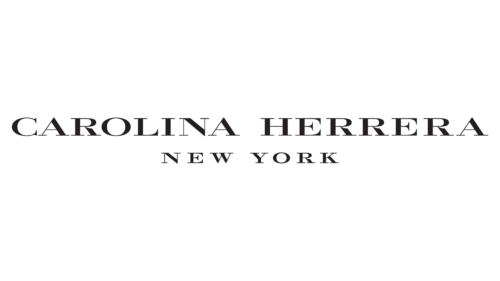
2000s to 2017 Carolina Herrera logo
2017 to now Carolina Herrera logo
- The current Carolina Herrera logo adopts a more minimalist approach, dropping the “New York” text and focusing solely on the brand name.
- The serif font remains, but there is a slight refinement in the lettering, with thinner, more elongated letters to create a cleaner, more modern look.
- This logo represents the brand’s focus on contemporary fashion while maintaining its signature elegance.
- The sleekness of this logo aligns with Carolina Herrera’s continued evolution in the luxury fashion market.
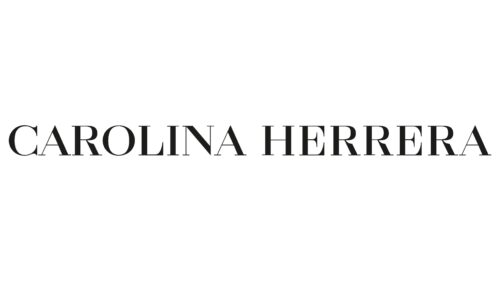
2017 to now Carolina Herrera logo
How to tell if Carolina Herrera is vintage from the tags
Carolina Herrera has evolved significantly in terms of branding and tag design since its inception. Throughout the years, Carolina Herrera tags have displayed different layouts, fonts, and design elements. These distinctions make it possible to identify the era of a specific piece of clothing. Tags from the earlier years often included bold serif fonts, simple layouts, and often “CH” logos, while later designs introduced a more modern and sophisticated look with variations in tag shapes and styles. Here is how to identify vintage Carolina Herrera pieces from different decades based on the tag design.
Having difficulty identifying vintage tags or labels? Submit a picture on our vintage tag identification page, and we’ll assist you!
1980s vintage Carolina Herrera tags
- Typically features bold, simple fonts displaying the full “Carolina Herrera” name.
- Rectangular-shaped tags with bold borders around the logo.
- The brand’s full name is always the main focus, with minimal extra information on the tag.
- Some tags display “Carolina Herrera Studio” in bright red with contrasting borders, often used for less formal or ready-to-wear collections.
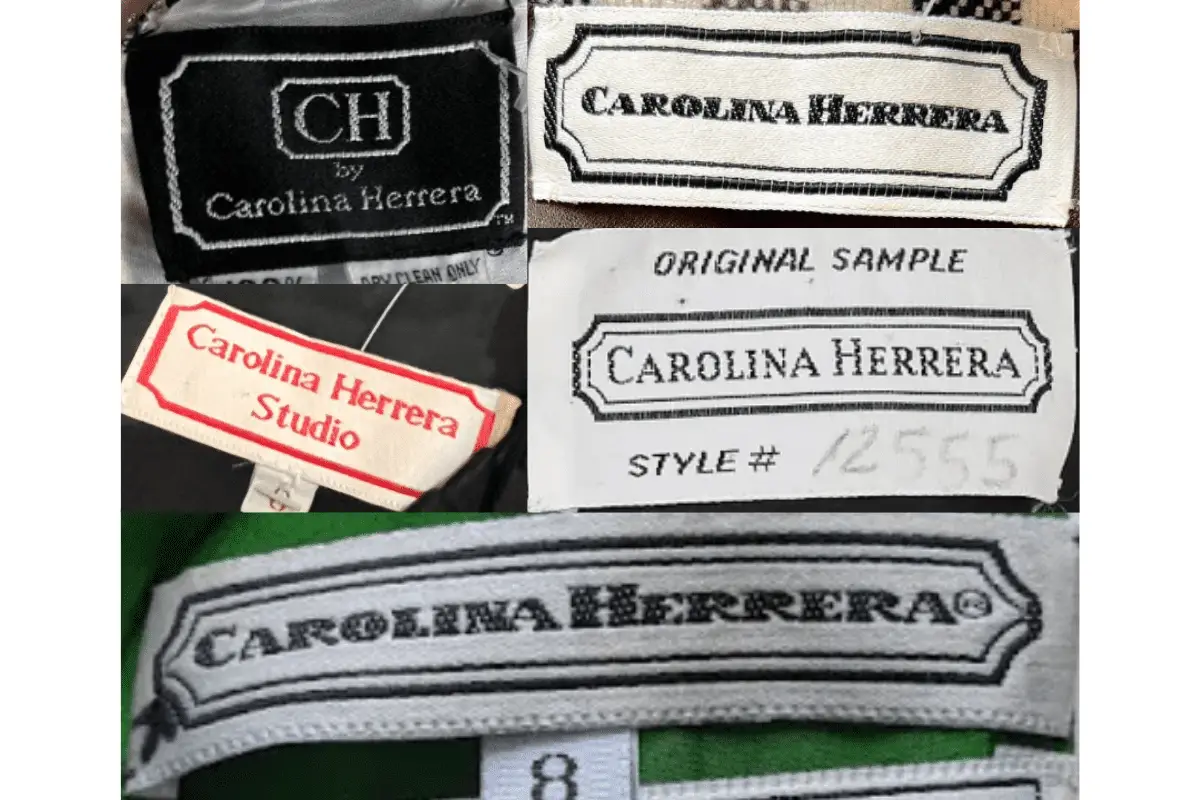
1980s Carolina Herrera tags
1990s vintage Carolina Herrera tags
- The introduction of the “CH” logo, which stands for “Carolina Herrera,” is common in this era.
- Tags feature both the “CH” logo and “Carolina Herrera” name underneath, often displayed in monochromatic designs such as black and white.
- Some tags include a sample identifier, such as “Original Sample” for special or unique items.
- Rectangular shapes remain consistent, but the use of dual text (“CH” and “Carolina Herrera”) helps distinguish them from the earlier tags.
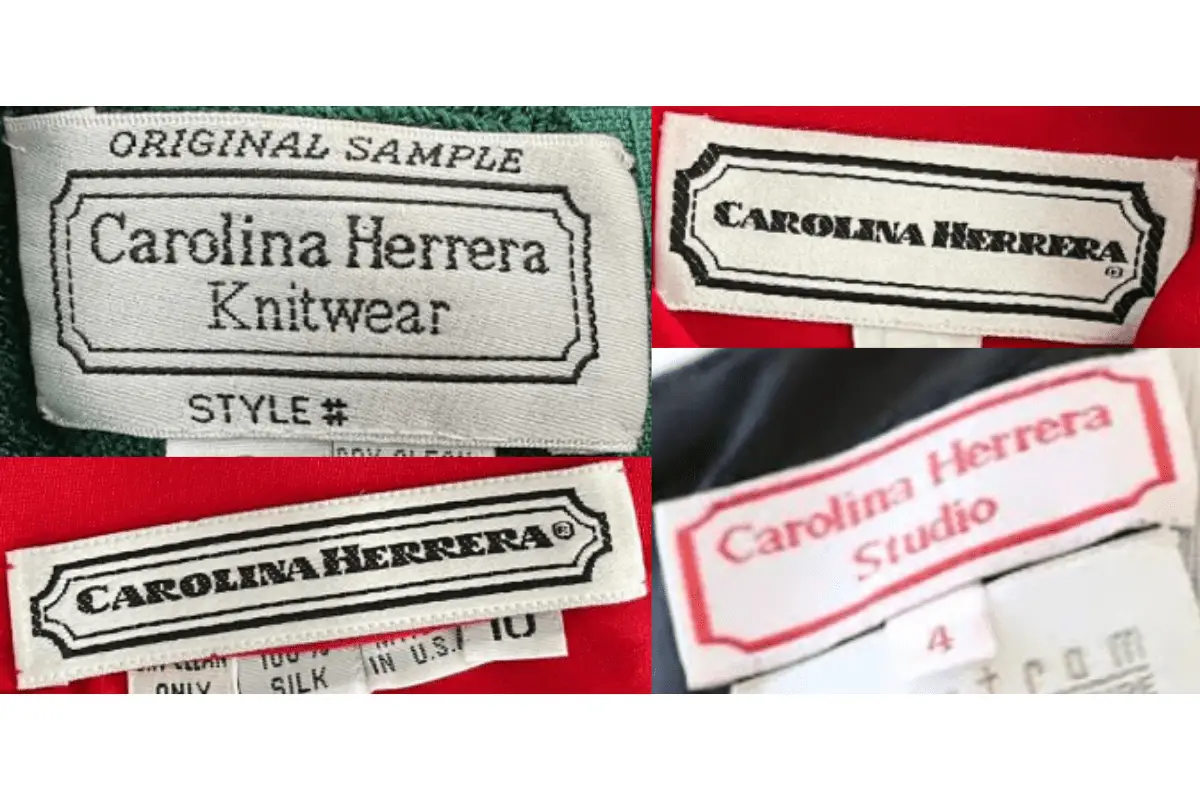
1990s Carolina Herrera tags
2000s vintage Carolina Herrera tags
- Tags continue to emphasize the “CH” logo, but the text becomes sleeker and more refined.
- Red backgrounds are introduced to some of the tags, signaling the brand’s exploration of bold design elements.
- Many tags from this era also use ribbon or looped fabric tags, adding a touch of luxury to the presentation.
- Tags can include small size indicators, usually in contrasting colors like white or red.
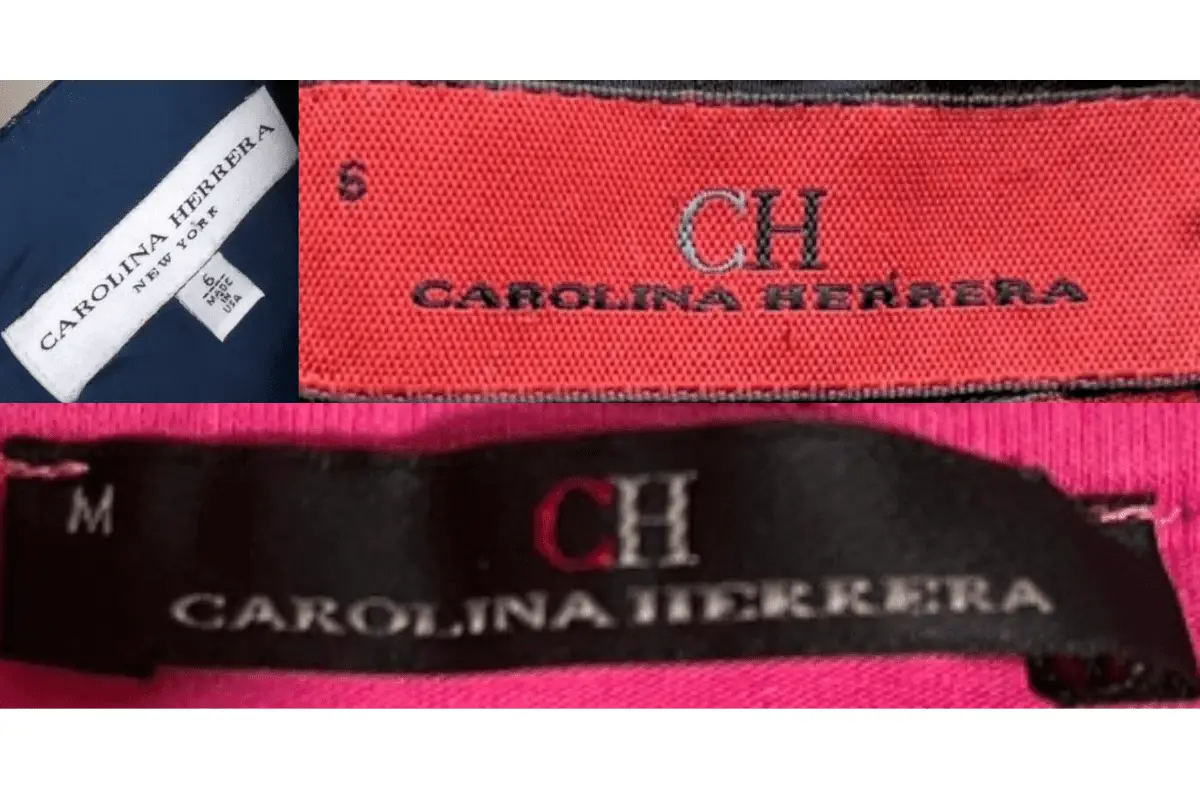
2000s Carolina Herrera tags
2010s vintage Carolina Herrera tags
- More modern and sophisticated designs, with sleek fonts and minimalistic layouts.
- The “CH” logo remains prominent, and the use of metallic threads or shiny materials becomes more frequent.
- Some tags use vibrant colors like red and silver, reflecting the brand’s move toward a more contemporary and fashion-forward identity.
- Fabric tags tend to be smoother and glossier, signaling a high-end luxury appeal in the later collections.
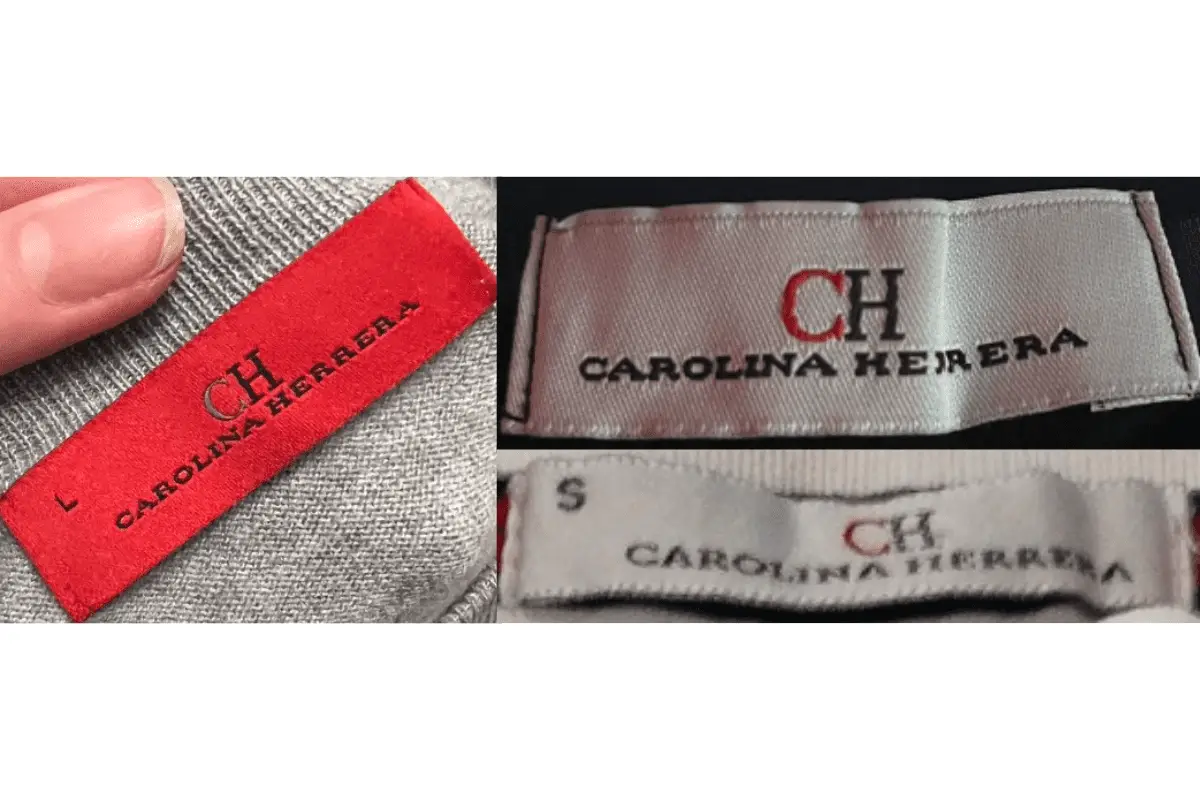
2010s Carolina Herrera tags



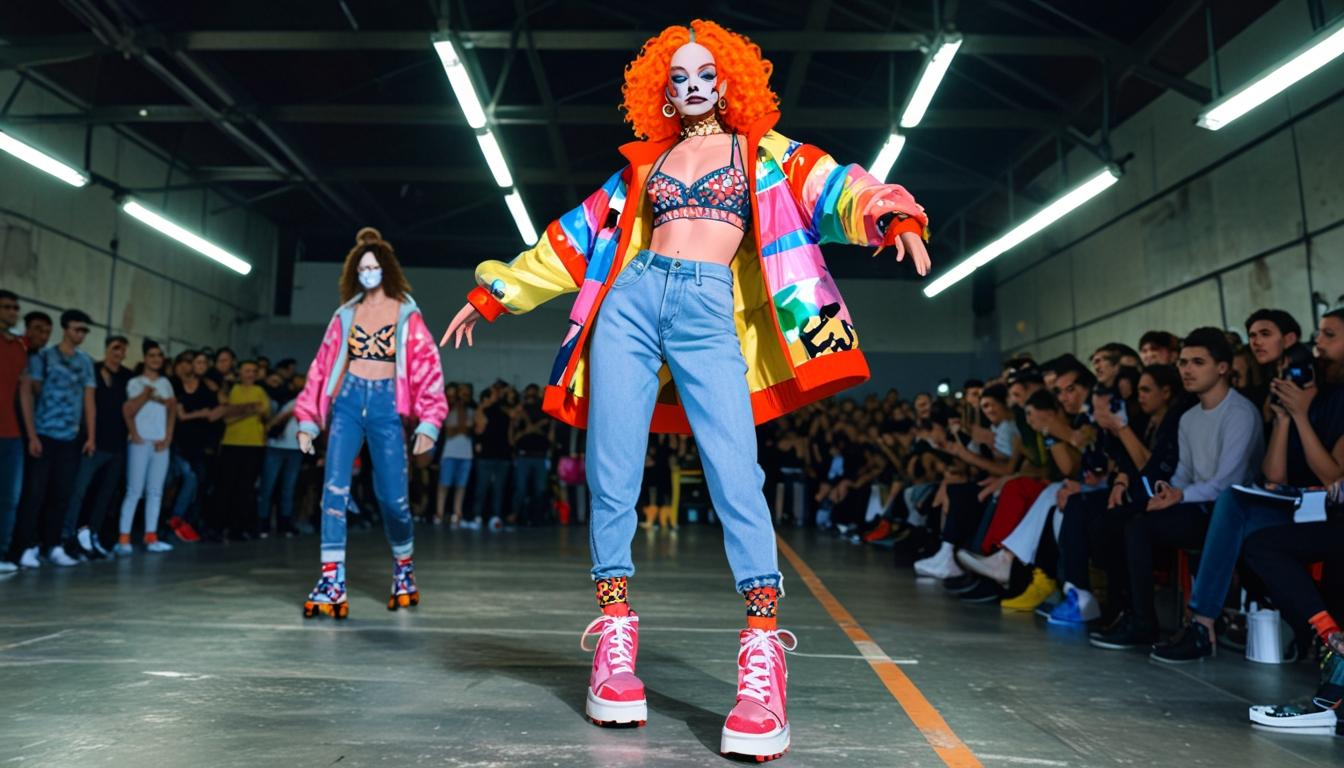
Your article helped me a lot, is there any more related content? Thanks!
Thanks for sharing. I read many of your blog posts, cool, your blog is very good.
Found a CH sweater at Goodwill Outlet and came here to try to date it. Thanks for the information! The tag was one of tones from the ’80s and ’90s. Sweet!
Thanks for sharing. I read many of your blog posts, cool, your blog is very good.